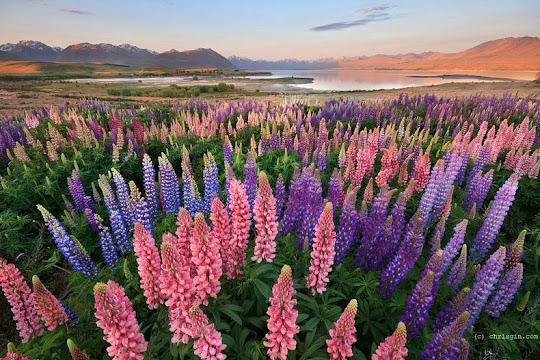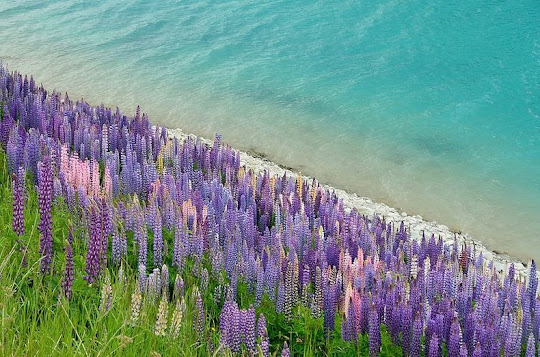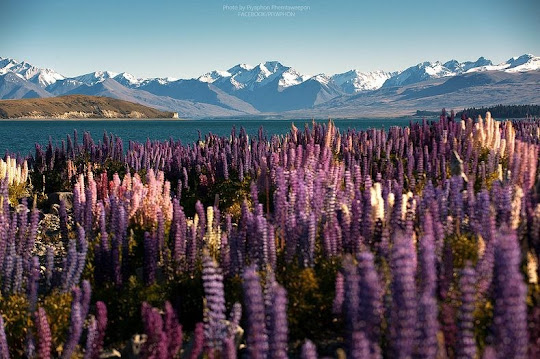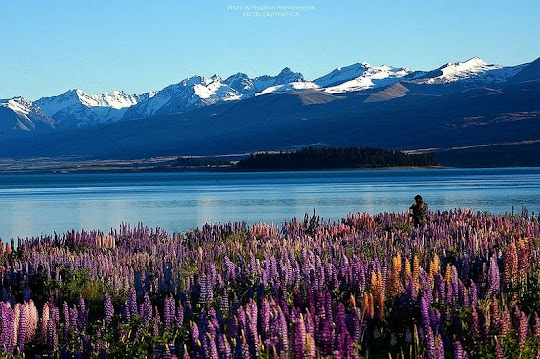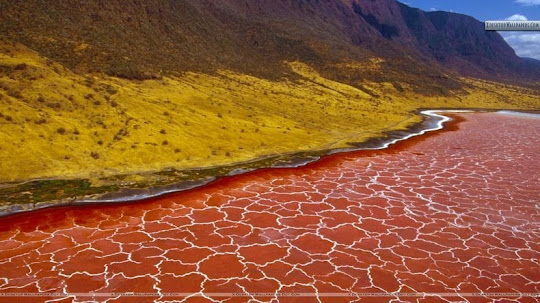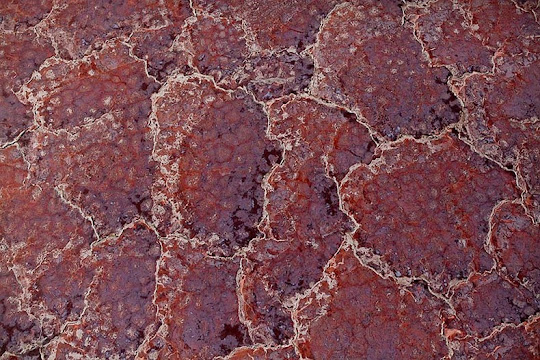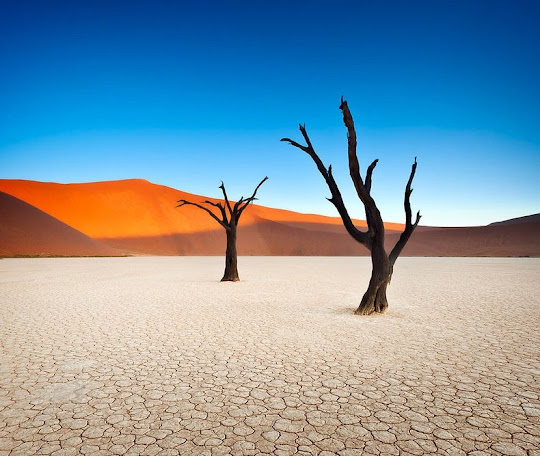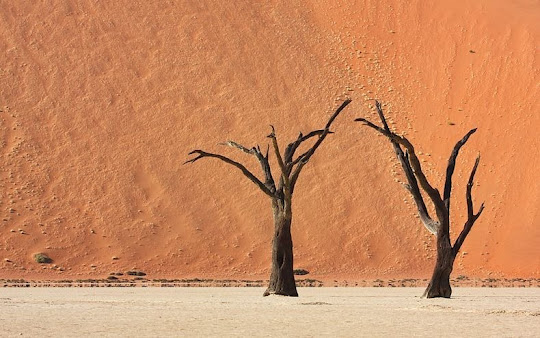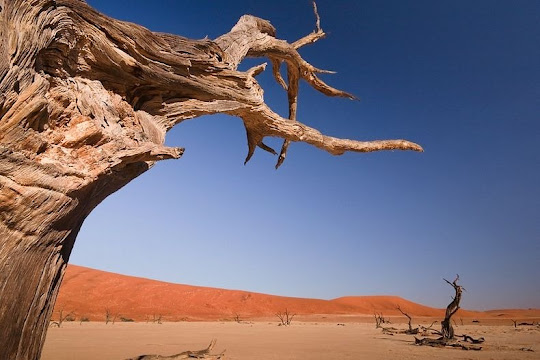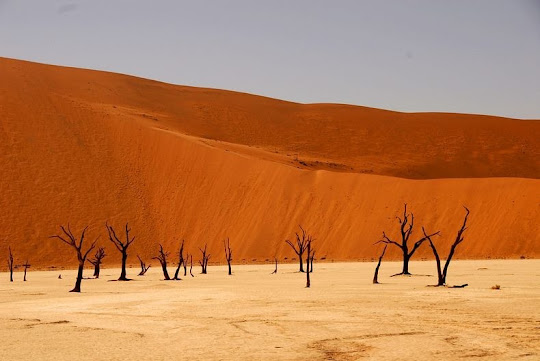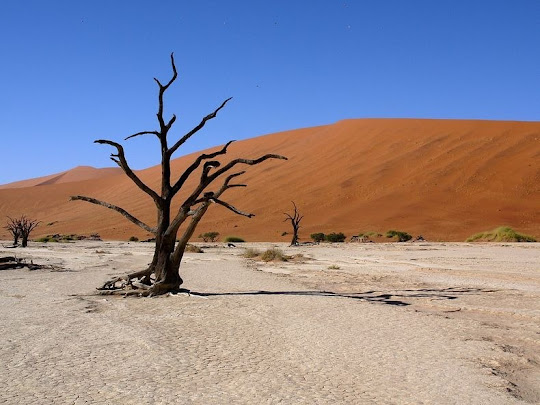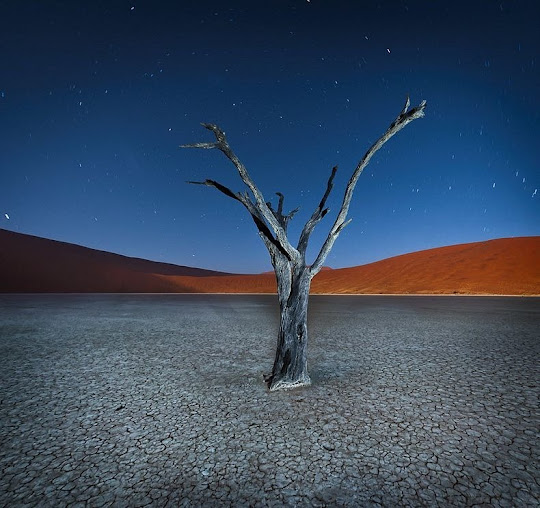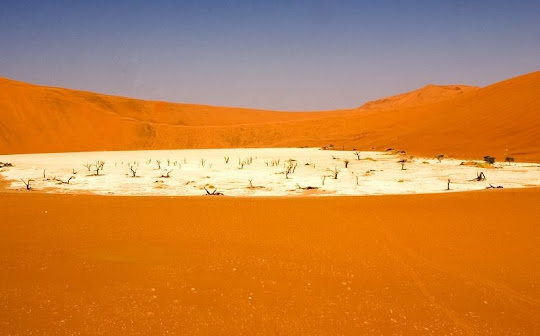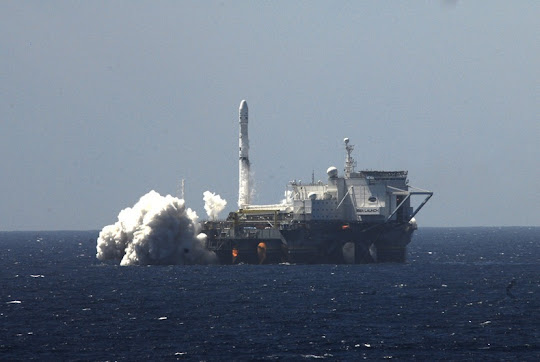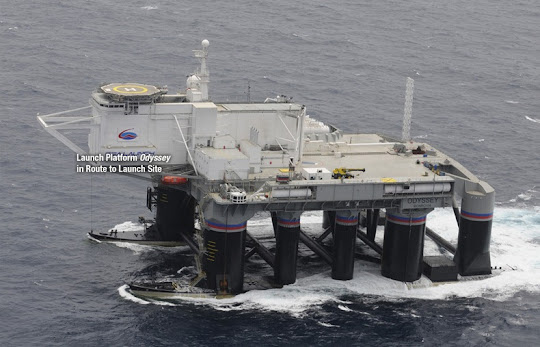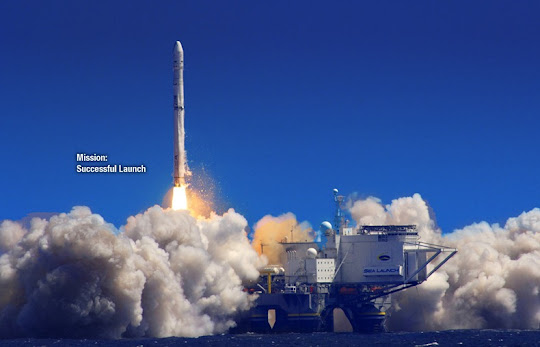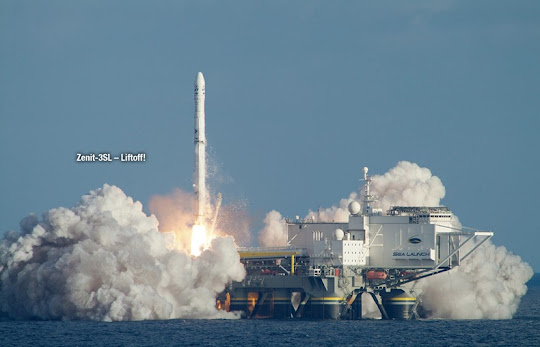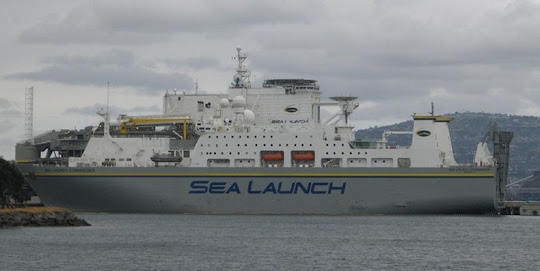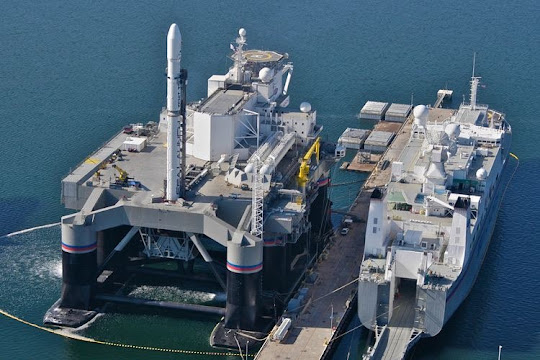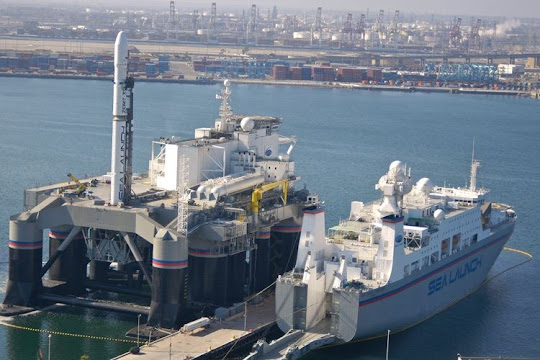For most parents and kids, crossing the street to catch the school bus is perhaps the riskiest part of the school run. But take a look at these Chinese schoolchildren from the village of Genguan. Everyday, these young kids walk along a precarious path carved by the side of a cliff, as they make their way to class in Bijie, in southwest China's Guizhou Province. Banpo Elementary School is located halfway up a mountain and the path to it winds through treacherous hillside passes and tunnels hewn out of the rock. The pebble-covered footpath is less than 0.5 meters wide, which means the children have to walk single file and press themselves into the side of the mountain if someone wants to squeeze past. This footpath was created 40 years ago as an irrigation ditch and although there is another safer route, but taking this means the children have to spend two hours to walk to school. The only assurance for parents is that Headmaster Xu Liangfan accompanies the 49 kids to school.

The story might sound incredible to some, but it isn’t uncommon for children from less privileged regions facing immense hardship on their commute to the institute of learning. You will be surprised at the great lengths some children are willing to go to reach school.

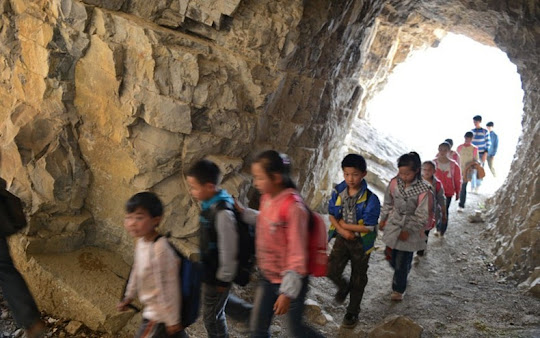
In Sumatra, Indonesia, about 20 strong-willed pupils from Batu Busuk village have to tightrope walk 30 feet above a flowing river to get to their class on time and then walk a further seven miles through the forest to their school in the town of Padang. The kids have been doing the balancing act for the last two years since the suspension bridge collapsed in heavy rain.

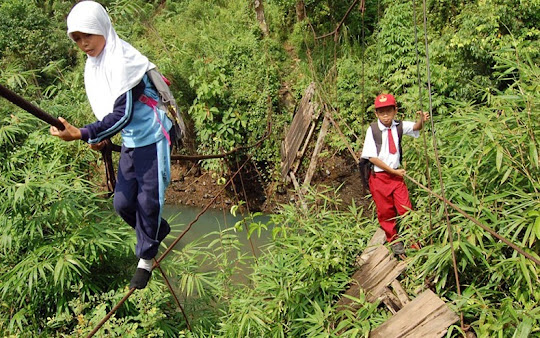
In another Indonesian village of Sanghiang Tanjung, children living on the wrong side of of the Ciberang River has to cross a broken suspension bridge to reach the other side where their school is located. Faced with an extra 30 minutes' walk to cross via an alternate bridge, the children have chosen to undertake the precarious crossing of the collapsed bridge instead.
The good news is: Indonesia’s largest steel producer, PT Krakatau Steel and some NGOs build a new bridge to replace one that was damaged after flooding in January 2012.




In yet another Indonesian village, children cycle their way over an aqueduct that separates Suro Village and Plempungan Village in Java, Indonesia. The children decided to use the aqueduct on their journey to school as a shortcut, even though it wasn't made for people to walk on. Even though it is dangerous, the children say would rather use it than walk a distance over six kilometers.
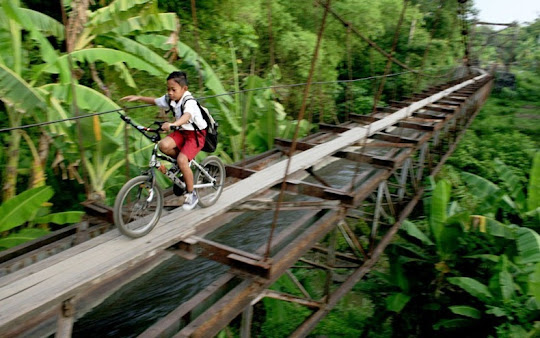
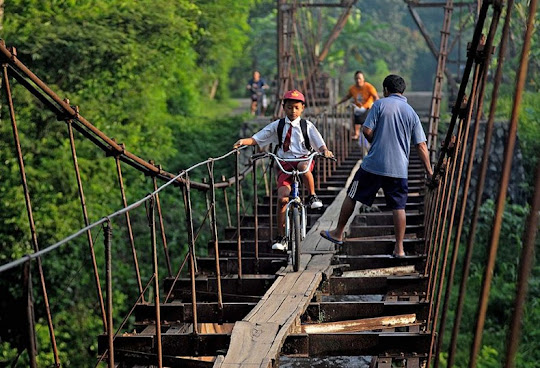

In Filipino, elementary school students use an inflated tire tube to cross a river on their way to school in a remote village in Rizal province, east of the capital Manila. The students have to walk for at least an hour a day to get to and from school, and are sometimes forced to skip classes or take shelter at relatives' homes if the river is swollen due to heavy rains. The community has been petitioning the local government to put up a suspension bridge in order to make the crossing easier, faster and safer.




The Filipino kids at least have tubes. These Vietnamese students aren’t so fortunate. Dozens of young children from grade 1 to grade 5 swim twice a day across the river in order to get to school at Trong Hoa commune, Minh Hoa district. In order to keep the clothes and books from getting wet, the students put them in large plastic bags and tightly sealed while crossing the river almost naked. These plastics bags were also being used to keep them afloat while swimming across the river. Upon reaching the other side of the river, they take their clothes out of the bag and put them on. The river is 15 meters wide and reportedly 20 meters deep.

Gondola bridges are common in the mountainous country of Nepal where good roads are in short demand. Children use handcrafted bridges made with planks, improvised ropes and pulleys, without safety harnesses and double security restraint. For decades, this lack of security has caused numerous accidents. Fortunately, several NGOs are currently concerned with building safe bridges and gondolas to mitigate accidents.
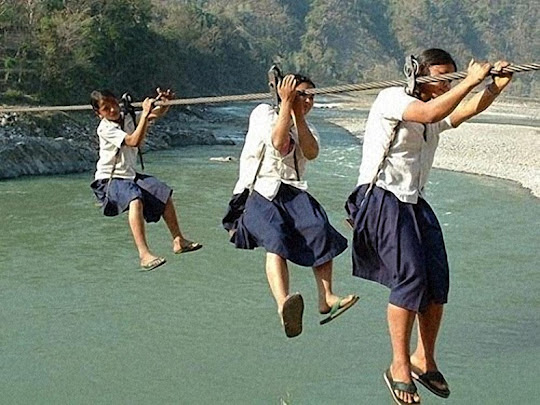
In Columbia, kids from a handful of families living in the rainforest, 40 miles southeast of the capital Bogota, commute via steel cables that connect one side of the valley to the other. This is the only way to reach school. The steel cables are 800 meters in length are strung 400m above the roaring Rio Negro.
Photographer Christoph Otto clicked this incredible picture of Daisy Mora and her brother Jamid, making their way at a breakneck speed of 50 miles per hour. She attaches the sack containing her brother, who is too young, at five, to make the crossing alone, and herself to a pulley. A branch in the shape of a wishbone forms a crude brake. The entire journey takes 60 seconds.

Back in China, around 80 school children who live in the boarding school at Pili, have to embark on a perilous 125-mile journey through the mountains of the remote Xinjiang Uighur Autonomous Region, at the end of their term. The children must also wade through four freezing rivers, cross a 650ft chain bridge and four single-plank bridges. The journey takes two days to complete.
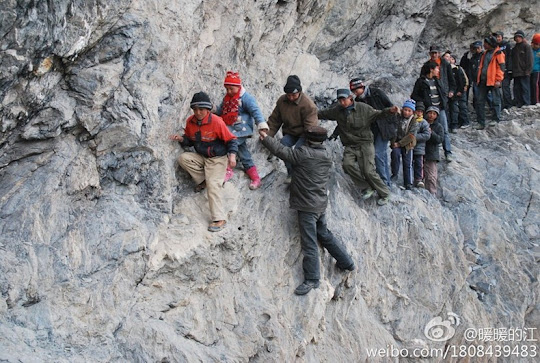
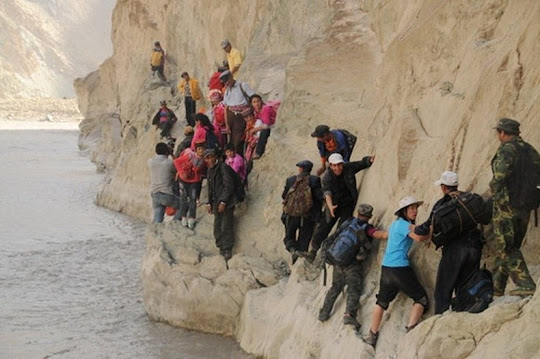

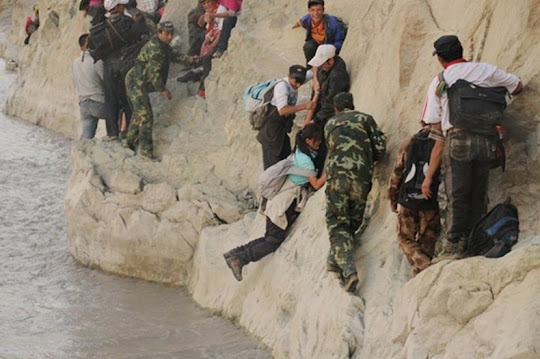
Finally, here is one striking picture captured by Reuter photographer Ammar Awad in 2010. During clashes between Israeli troops and Palestinians in the refugee camp Shuafat, near Jerusalem, a girl is seen calmly walking towards her school unconcerned by the violence around her. The street is strewn with rocks thrown by protesters in the direction of the Israeli troop who can be seen behind the girl in protective shields.

These pictures puts into a different perspective the whining complains of students about “having to go to school,” not bringing pencils or paper, and not making it to class on time. Ed Darrell, who blogs at Millard Fillmore's Bathtub, questioned: What value does this girl and her family place on education? Is education a civil right? Is education a basic human right?
Source